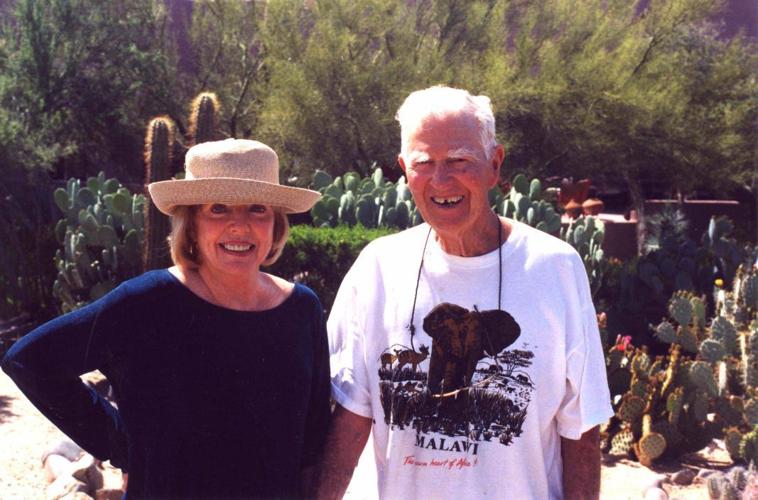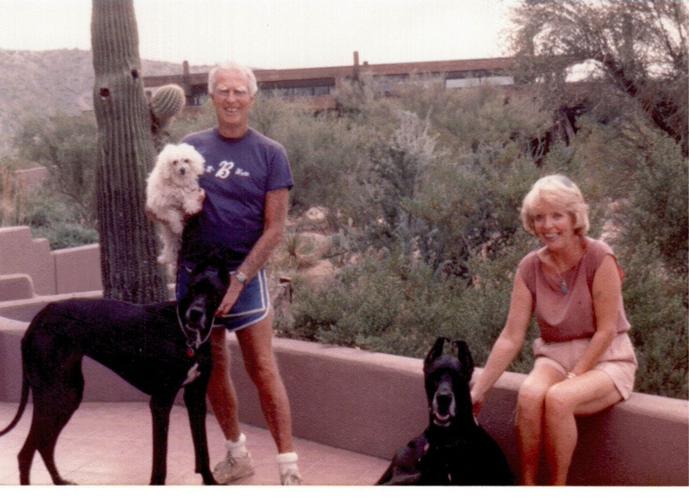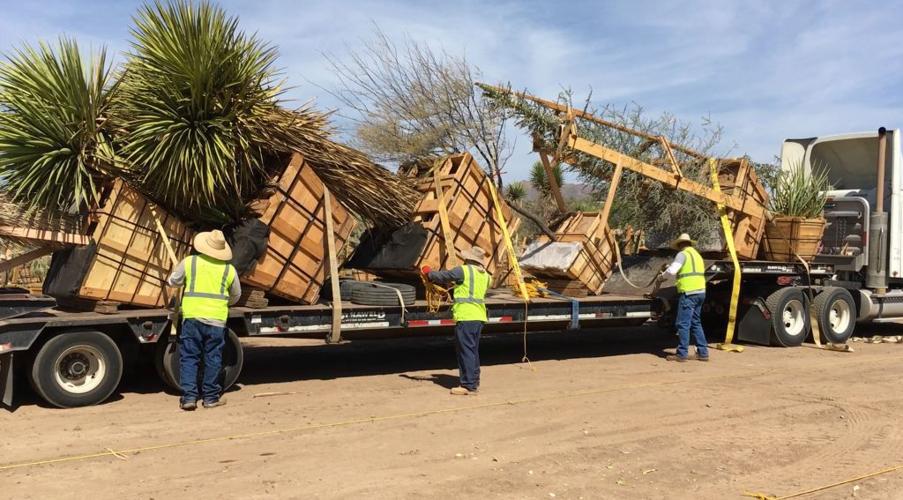A homecoming scenario is playing out involving a Scottsdale private garden, a University of Arizona botanical outpost and a Tucson cactus grower.
And for a happy ending, financial donors are needed.
Boyce Thompson Arboretum, a research and experiment station run by the UA College of Agriculture and Life Sciences, is in the midst of moving 6,000 arid plants.
Those plants from around the world are from the Wallace Desert Gardens, a private collection in Scottsdale that has to be gone by summer 2017 when the land goes on the market.
For some of those plants, it will be a homecoming of sorts.
“Fifty plants that have been or will be sent to (Boyce Thompson Arboretum) were acquired from BTA,” says Lee Brownson, executive director of the Wallace Desert Gardens.
Most were purchased for the gardens at arboretum plant sales, says Brownson, starting in 1995. The oldest specimens include two types of prickly pear, three kinds of barrel and a Peruvian columnar. The last purchase was an African flowering shrub (Tarchonanthus camphortus), bought in 2013.
There’s another intriguing tie between the Wallace collection and Tucson. It is possible some plants started in Superior, grew and were cloned in the Old Pueblo, then went to Scottsdale.
Brownson says many of the Wallace gardens’ purchases came from Tucson growers, who find great propagating success because of the climate.
One of those growers is Gene Joseph, owner of Plants for the Southwest/Living Stones Nursery. More than 135 of the plants he sold to Wallace are making their way to BTA.
He and his wife and business partner, Jane Evans, studied plant science at the UA in the 1970s and were active in its horticulture club.
They would go to the arboretum, which opened to the public in 1929, to pick up plants and cuttings that they used to launch the department’s cactus collection. Joseph also kept a few for himself.
“I still have some individual clones that are direct descendants of plants from the arboretum,” he says.
He admits he doesn’t know for sure that he sold any of those BTA clones to the Wallace gardens, but “it’s remotely possible.”
WALLACE LEGACY
Henry B. Wallace, known as H.B., was born in 1915 into a prominent agricultural family. His grandfather, Henry C., served as U.S. secretary of agriculture in the early 1920s and co-founded the American Farm Bureau Federation.
Wallace’s father, Henry A., served as U.S. agriculture secretary in the 1930s, as well as vice president in the early 1940s. He started the Hi-Bred Corn Co. in 1933 to improve corn yields.
H.B. Wallace studied genetics in college and took over the hybrid poultry division of his father’s company, now known as DuPont Pioneer.
Wallace retired to Scottsdale in 1985 because he liked to play tennis, says Brownson.
“He quickly fell in love with cactus plants,” he says. “He loved the big saguaros.”
Eventually, Wallace became concerned about the loss of desert habitat around the world.
“His hobby turned into a passion for saving these plants and having biodiversity stored outside of the habitat,” Brownson says. Wallace, who died in 2005, wanted scientists to use his plants to research medical and other uses.
Sonoran Desert species are a small part of his massive collection, which he built behind his home in a gated community. Specimens representing more than 1,600 species came from Africa, North and South America, Australia, the Arabian Peninsula and Madagascar, among other places.
They include at least 50 kinds of agave, 40 types of acacia, five salvia species and 20 aloe types.
There are treelike cacti, 25 boojum plants, leafy South American trees, thorny African bushes, hairy Peruvian columnar cacti, numerous saguaros and hundreds of yuccas.
Wallace created a foundation to maintain the collection, but because it was in a residential area, he could not open it to the public to raise funds. The endowment is drying up, forcing the move, Brownson says.
75-MILE MOVE
The arboretum won the rights to the collection and in November started moving the thousands of plants.
The plants need to be dug up and boxed. Some need scaffolding to survive the 75-mile drive between Scottsdale and Superior.
“We’ve been putting them on semi-trucks,” says BTA Executive Director Mark Siegwarth.
About 2,000 have made it to arboretum, waiting to be planted along a new trail that will wind through 100 acres of the 392-acre park.
The painstaking relocation work is burning through the estimated budget for the project. The arboretum has started a GoFundMe campaign to raise some $2 million to complete the task. Otherwise, remaining plants will likely be bulldozed.
“We think all the plants should be saved if possible,” says Siegwarth. “We have an ethical obligation to keep the collection together, not only to honor the legacy, but also, as an accredited museum, we have an obligation to treat each plant as valuable.”
The Wallace collection will elevate BTA’s standing as a major botanical garden, he says. By adding the 1,600 species of plants, the arboretum will be home to more than 5,000 species.
“It is safe to say the combined collections will put us in the top 25 gardens in the United States,” says Siegwarth, and one of the rare botanical gardens devoted to arid plants.
If all goes according to plan, the Wallace collection will open to the public in spring 2018.










